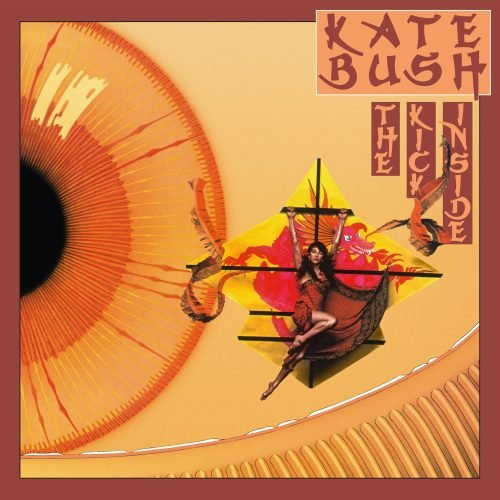In the vast expanse of popular music, few debut albums have encapsulated the essence of artistic innovation and emotional depth as profoundly as Kate Bush’s The Kick Inside. Released in 1978, this album not only announced the arrival of a singular talent but also heralded a new chapter in the intersection of pop and avant-garde music. Situated at the inception of Kate Bush’s illustrious discography, The Kick Inside is both a culmination of her early musical explorations and a bold proclamation of her unique artistic vision. Unlike anything in the contemporary music landscape of the late ’70s, the album was not so much a departure from previous works — given its position as her debut — but rather an introduction to Bush’s intricate soundscapes, blending classical motifs with experimental pop.
Artistic Intentions
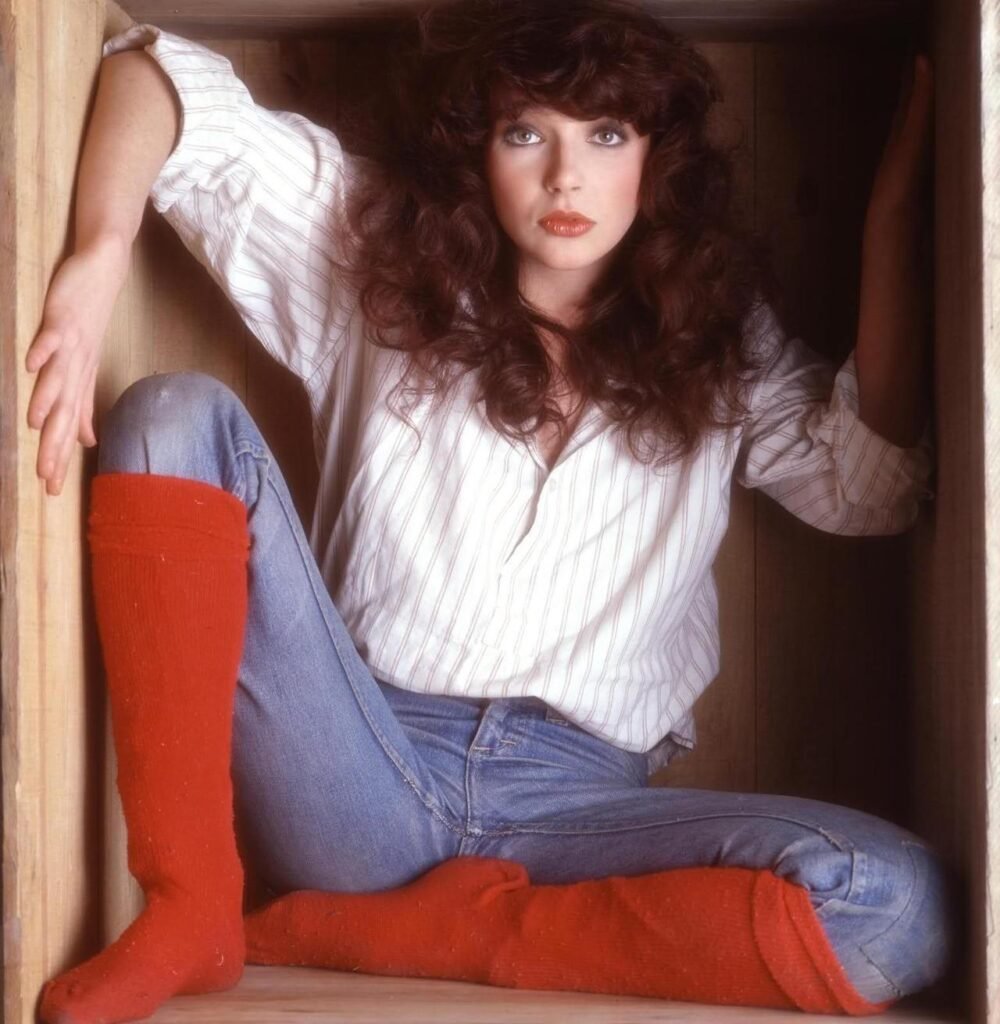
The artistic intentions behind The Kick Inside are as multifaceted as the album itself. Bush, a prodigious talent who wrote some of the album’s material in her early teens, aimed to create a work that was deeply personal yet universally relatable. Drawing inspiration from literature, film, and personal experiences, she crafted songs that explored complex themes such as love, sexuality, and existential angst through a lens that was both ethereal and grounded. Interviews and album notes from the period reveal Bush’s desire to push the boundaries of songwriting and production, experimenting with sound and narrative structure to evoke a wide range of emotions and imagery. From the hauntingly beautiful “Wuthering Heights” to the introspective “The Man with the Child in His Eyes,” The Kick Inside serves as a testament to Bush’s ambition to forge a new path in music, one that embraced the theatrical and the surreal, while maintaining a core of emotional authenticity.
“I’d been on a mission since my mid teens to make an album. This was it; The Kick Inside. The plan didn’t really go any further than that.”
Kate on her debut album
In the broader music landscape, The Kick Inside stood out for its unabashed originality and the sheer audacity of its creative vision. At a time when rock and disco dominated the charts, Bush’s use of classical piano, intricate harmonies, and literary references marked her as a pioneering force in pop music. The album’s success challenged the industry’s norms and paved the way for artists seeking to experiment with their sound and subject matter. Thus, The Kick Inside is not just a remarkable debut; it is a bold statement of artistic intent, signaling the emergence of an artist unafraid to explore the depths of her creativity and challenge her listeners to journey with her into uncharted musical territories.
Sonic Exploration

The sonic exploration within Kate Bush’s The Kick Inside is a masterclass in the marriage of production quality, musical arrangements, and genre elements, creating a tapestry of sound that is as intricate as it is innovative. The production, led by Andrew Powell and overseen by Bush herself, strikes a balance between clarity and warmth, eschewing the lo-fi trends of some contemporaries for a sound that is polished without being sterile. This choice in production style underscores the album’s themes of introspection, passion, and fantasy, allowing each track to breathe and resonate with the listener on a deeply personal level. The clarity of the production ensures that Bush’s vocal performances—ranging from the ethereal to the earthy—are front and center, while the diverse instrumentation envelops the listener in a lush, auditory embrace.
Musical Arrangements
Musically, The Kick Inside is a phantasmagoria of arrangements that defy expectations at every turn. Bush’s classical piano training is evident throughout the album, providing a foundation upon which layers of strings, woodwind, and innovative synthesizer work are built. Her use of the Mellotron, for example, adds a texture that is both otherworldly and intimately familiar, a nod to the progressive rock influences that permeate her work. Vocally, Bush experiments with range and expression, using her voice as an instrument in its own right. Tracks such as “Wuthering Heights” showcase her ability to shift from haunting falsettos to rich, emotive tones, a testament to the album’s innovative use of vocal arrangements. Moreover, the interplay between voice and instruments on tracks like “Them Heavy People” and “Oh to Be in Love” reveals a sophisticated understanding of harmony and rhythm, making each arrangement a memorable exploration of sound.
Genre Elements
In terms of genre, The Kick Inside is an eclectic journey through musical landscapes. While primarily rooted in art pop, the album touches upon elements of progressive rock, classical music, and even folk, creating a blend that was quite novel at the time. This fusion is perhaps most evident in the seamless transition from the classical piano introduction of “The Man with the Child in His Eyes” to a lush, pop orchestration that supports yet never overshadows Bush’s storytelling. The album does not simply blend genres; it weaves them into a new fabric that defies strict categorization, making it a groundbreaking work that remains influential in the realms of pop and beyond.
Lyrical Analysis
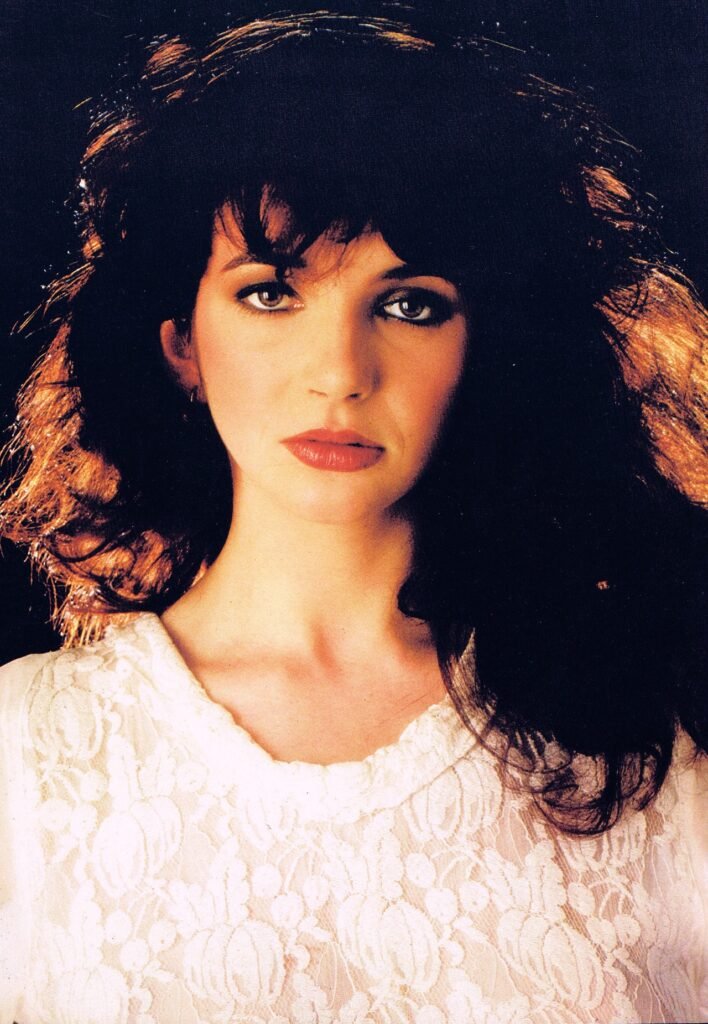
The lyrical landscape of Kate Bush’s The Kick Inside is as rich and varied as its sonic counterpart, marked by a depth and poeticism that delve into themes both timeless and deeply personal. Central to the album is a meditation on the complexities of love and sexuality, the innocence of youth versus the onset of maturity, and a profound fascination with death and rebirth. These themes are not merely visited; they are explored through lyrics that weave narratives, imagery, and emotion into a tapestry as compelling as it is complex.
Bush’s lyrics on The Kick Inside often oscillate between the narrative and the abstract, inviting listeners into a world where fantasy and reality blur. The album opener, “Moving,” serves as a homage to the power of dance and physical expression, drawing inspiration from Bush’s own experiences with dance instructor Lindsay Kemp. In contrast, “Wuthering Heights,” arguably the album’s most famous track, adapts the story of Emily Brontë’s novel into a haunting ballad from the perspective of Catherine Earnshaw. These narrative-driven pieces sit alongside more abstract compositions like “Strange Phenomena,” which contemplates the cyclical nature of life and the synchronicities that bind us. This duality of narrative and abstraction allows listeners to engage with the lyrics on multiple levels, finding personal meaning amidst the poetic intricacies.
Lyrical Depth
The lyrical depth of The Kick Inside is a testament to Bush’s songwriting prowess, showcasing her ability to craft lyrics that resonate with a poetic and often literary quality. The complexity of her lyrics is not merely in their narrative or thematic ambitions but in their structural and linguistic choices. Rhyme schemes, alliteration, and assonance are employed with a subtlety that enhances the emotional texture of each song without sacrificing clarity. The result is a body of work that rewards repeated listens, revealing new layers of meaning and connection over time.
Emotional Impact
Emotionally, the album traverses a broad spectrum, from the exuberance of “Them Heavy People” to the introspective melancholy of “The Man with the Child in His Eyes.” Bush’s lyrics have a unique capacity to evoke empathy, inviting listeners to inhabit the emotional landscapes of her characters and narratives. The title track, “The Kick Inside,” deals with the theme of incest and suicide with a sensitivity that is both heart-wrenching and deeply human, encapsulating the album’s ability to confront dark themes with a lightness of touch. In “Wuthering Heights,” the longing and despair of unfulfilled love are palpable, illustrating how Bush’s lyrical storytelling can evoke a profound emotional response, stirring feelings of joy, sadness, and contemplation.
Cohesion and Flow
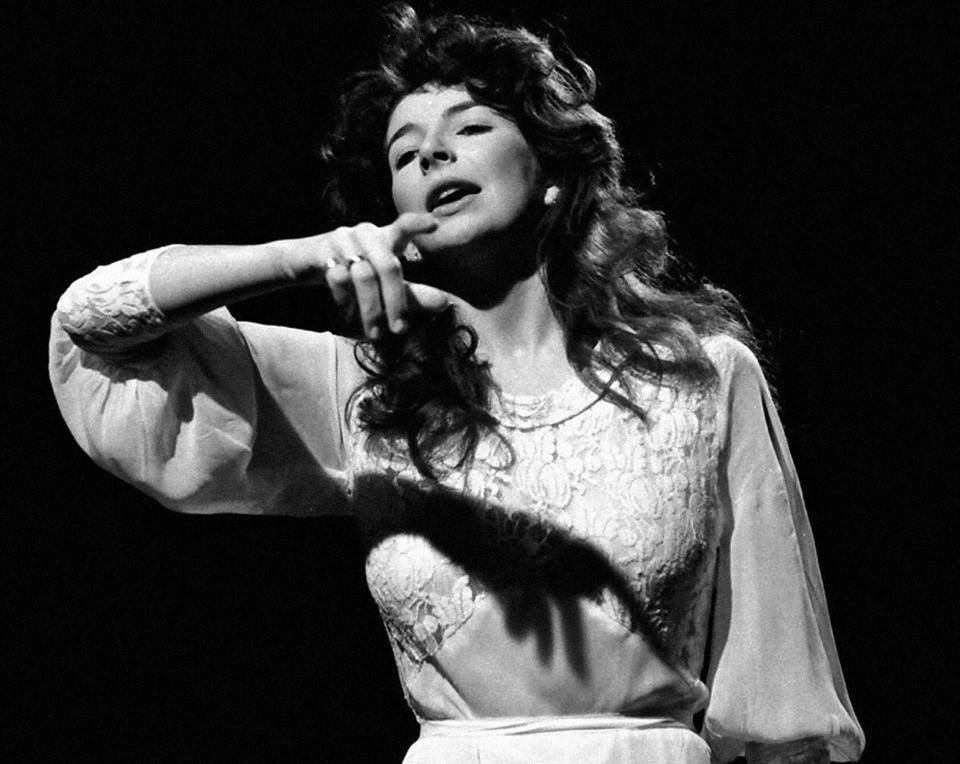
In evaluating the cohesion and flow of Kate Bush’s The Kick Inside, one is struck by the album’s remarkable ability to function as a unified whole, despite the diversity of its thematic and musical elements. The arrangement of tracks demonstrates a thoughtful consideration for both narrative and emotional progression, creating an experience that is immersive and coherent for the listener.
Track Progression
From the outset, The Kick Inside embarks on a journey that is as much emotional as it is musical. The album opens with “Moving,” a track that not only sets the stage musically with its ethereal qualities but also thematically, as it pays homage to the transformative power of dance and physical expression. This opening acts as a prelude to the range of emotions and themes that Bush will explore. The transition from the upbeat and quirky “Them Heavy People” to the introspective and melancholic “Man with the Child in His Eyes” showcases Bush’s ability to navigate shifts in mood and subject matter seamlessly, guiding the listener through the peaks and valleys of human experience with a deft hand.
Narrative and emotional progression are further exemplified in the way the album bookends its exploration of love, life, and existential themes with “Moving” and the closing title track, “The Kick Inside.” This cyclical structure mirrors the thematic motifs of birth, death, and rebirth that pervade the album, lending it a sense of completeness and finality that is deeply satisfying. The placement of “Wuthering Heights” towards the end of the album serves as a climactic point, where the emotional intensity and thematic richness reach their zenith, before gently leading the listener towards the resolution offered by “The Kick Inside.”
Thematic Consistency
Thematic consistency is maintained with remarkable skill across the album. While each track stands as a unique exploration of style and subject matter, from the literary adaptation of “Wuthering Heights” to the deeply personal narratives of “The Man with the Child in His Eyes,” there is a common thread of introspection, a celebration of the fantastical, and a nuanced examination of the human condition that ties them all together. Musically, Bush’s distinctive use of piano, combined with innovative arrangements and a wide range of instrumental textures, ensures that each song contributes to a unified sonic palette. Even as the album delves into a variety of genres, from art pop to elements of folk and progressive rock, it retains a stylistic coherence that complements its thematic ambitions.
In terms of flow, there are no jarring shifts or dissonant transitions; rather, the album moves with a fluidity that is both intentional and artful. This seamless progression is a testament to Bush’s meticulous attention to the album’s structure, ensuring that each track not only stands on its own merits but also contributes to the larger narrative and emotional arc of the work as a whole.
Standout Tracks and Moments
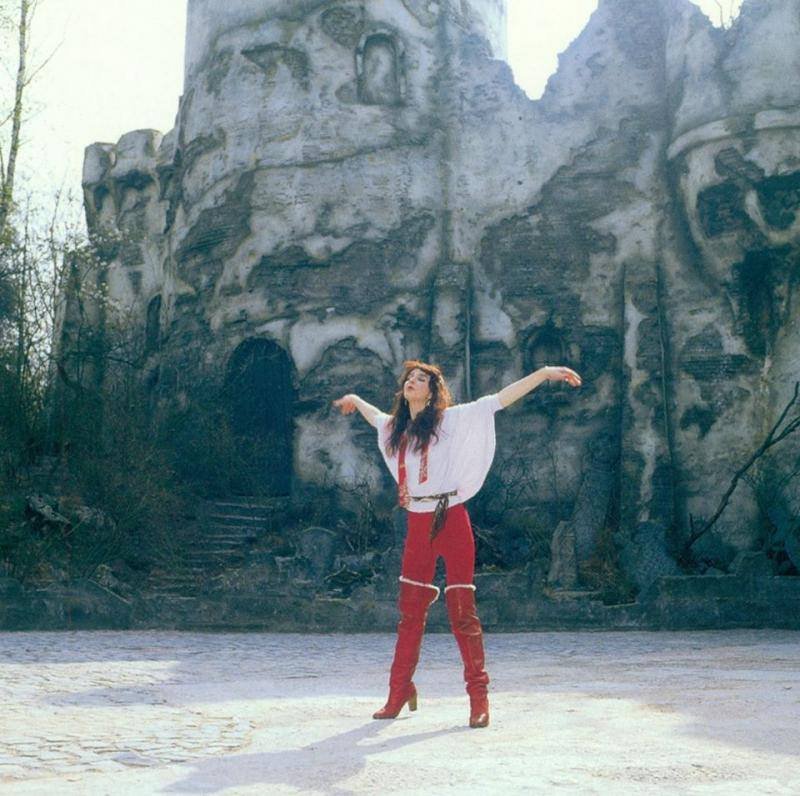
Within the rich tapestry of The Kick Inside, certain tracks emerge as pillars of artistic achievement, innovation, and emotional depth, setting them apart in the realm of music history. These standout tracks, coupled with unforgettable moments, not only encapsulate the essence of the album but also underscore Kate Bush’s unparalleled talent as a songwriter and performer.
Standout Tracks
- “Wuthering Heights” stands as a monumental achievement in songwriting and musical expression. Its inspiration drawn from Emily Brontë’s classic novel, the track is notable for its ethereal melody, haunting vocal performance, and lyrical depth. Bush’s ability to channel the novel’s tragic romance through a pop song is nothing short of revolutionary, showcasing her knack for blending literary depth with musical innovation. The song’s sweeping arrangement and Bush’s otherworldly vocal range set it apart as a moment where music and storytelling merge seamlessly.
- “The Man with the Child in His Eyes” is another highlight, remarkable for its emotional resonance and maturity, particularly considering Bush wrote it at the age of 13. The song’s sparse arrangement, centered around piano and strings, allows Bush’s expressive vocals and the poignant lyrics to take center stage. It’s a masterclass in understatement, proving that power often lies in simplicity and vulnerability.
- “Them Heavy People” shines for its rhythmic complexity and lyrical wit. The song’s exploration of spiritual and philosophical awakening is delivered over a uniquely infectious melody that blends pop with elements of reggae. Bush’s playful and engaging delivery, combined with the song’s lyrical encouragement towards self-discovery and enlightenment, highlights her ability to tackle profound themes with a light-hearted touch.
Memorable Moments
- The opening lines of “Wuthering Heights” (“Out on the wily, windy moors…”) instantly transport the listener into the song’s atmospheric narrative. Bush’s voice, combined with the sweeping strings, sets a dramatic tone that perfectly captures the song’s haunting quality.
- The moment in “The Kick Inside” where the music builds to the line, “you must lose me like an arrow shot into the killer storm,” is heartbreakingly beautiful. It’s a pivotal point in the song that showcases Bush’s ability to convey deep emotional truths with poetic precision.
- In “The Man with the Child in His Eyes,” the strings swell around the line, “He’s here again, the man with the child in his eyes.” This musical moment enhances the song’s emotional depth, creating a sense of intimacy and introspection that resonates deeply with listeners.
- “Oh to Be in Love” offers a moment of pure musical joy with its chorus. The way Bush’s vocals soar as she sings, “Oh to be in love/And never get out again,” captures the euphoric yet binding nature of love, showcasing her ability to express complex emotions through her music.
Each of these tracks and moments contributes to the enduring legacy of The Kick Inside, illustrating Kate Bush’s extraordinary gift for blending innovation, emotion, and artistry. The album, through these standout elements, invites listeners into a world where music transcends the ordinary, becoming a medium for profound emotional and intellectual exploration.
Artistic Contribution and Innovation
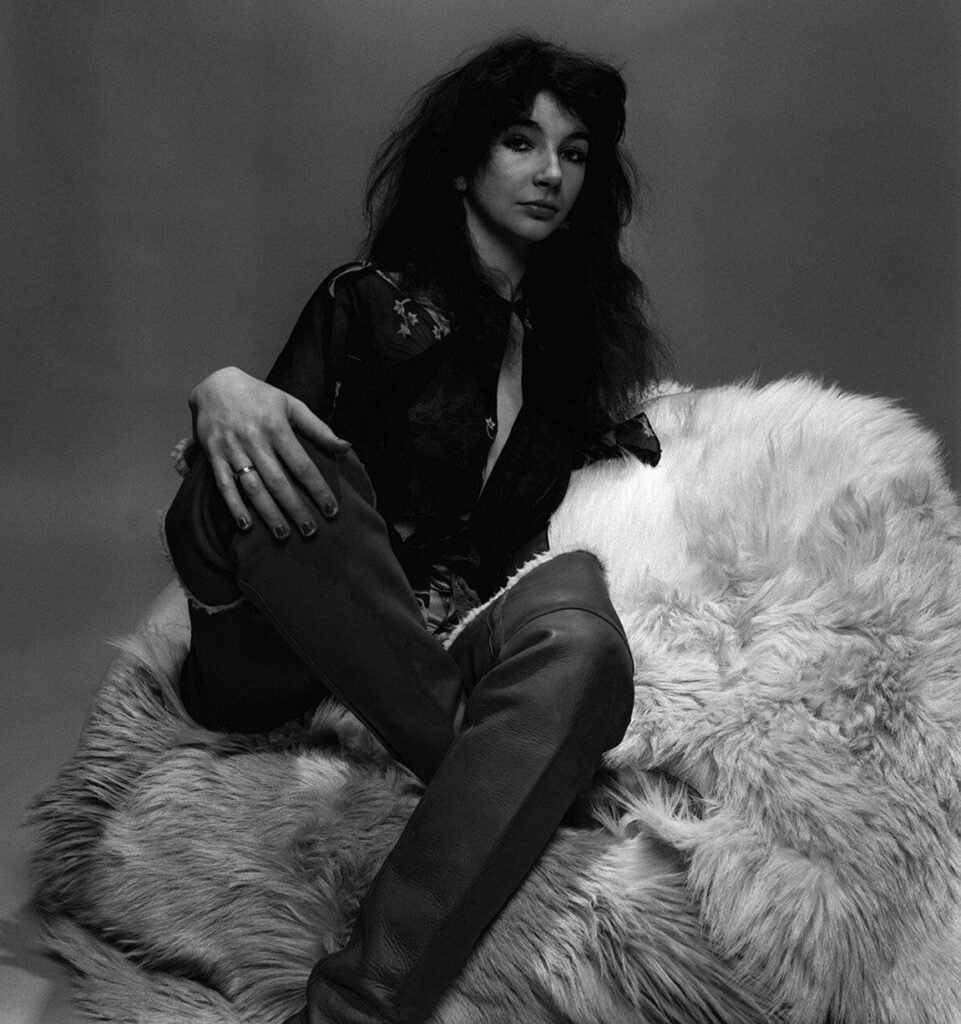
The Kick Inside, through its fusion of artistic vision, lyrical depth, and sonic innovation, occupies a distinctive place within the music industry and the broader tapestry of pop and art rock genres. Kate Bush’s debut album not only pushed the boundaries of what was musically and thematically expected within the pop framework but also paved the way for a more expansive interpretation of genre, narrative storytelling in music, and the role of female artists in crafting their creative identity.
Place in Genre/Industry
In the late 1970s, the music industry was dominated by disco and rock, genres that, while diverse, often adhered to certain stylistic and thematic conventions. The Kick Inside broke from these norms, introducing a sound that was both deeply personal and unabashedly experimental. Bush’s use of classical instrumentation alongside traditional rock elements, her incorporation of literary and cinematic references, and her exploration of complex themes such as sexuality, mysticism, and existential angst marked a departure from the industry’s prevailing trends. This album not only carved out a niche for Bush within the art pop and progressive rock spheres but also challenged the industry to acknowledge and embrace more experimental and introspective approaches to pop music.
Innovation
Several aspects of The Kick Inside underscore its innovative approach to music creation:
- Production and Arrangement: The album’s production, marked by its clarity and depth, allowed for a rich layering of sounds that was somewhat unconventional for the time. The seamless integration of classical instruments, such as the piano and strings, with electronic synthesizers and traditional rock instrumentation created a sound that was both timeless and ahead of its time. This innovative production approach ensured that the album’s complex arrangements and Bush’s vocal intricacies were presented with the utmost clarity and impact.
- Approach to Genre: Bush’s refusal to be confined by genre expectations is evident throughout the album. By blending elements of pop, rock, classical, and folk music, she created a sound that was uniquely her own. This genre-blending not only set The Kick Inside apart from its contemporaries but also influenced the direction of pop music, encouraging future artists to explore and integrate diverse musical styles.
- Thematic Exploration: Bush’s approach to songwriting, characterized by its narrative depth and poetic lyricism, pushed the boundaries of thematic exploration in pop music. The album’s songs address a range of complex subjects, from the whimsical to the profound, challenging listeners to engage with music as a form of storytelling and intellectual inquiry. This emphasis on lyrical depth and thematic richness contributed to a shift in how pop music could be perceived and appreciated, paving the way for artists who sought to explore more substantive and challenging topics in their work.
Closing Thoughts
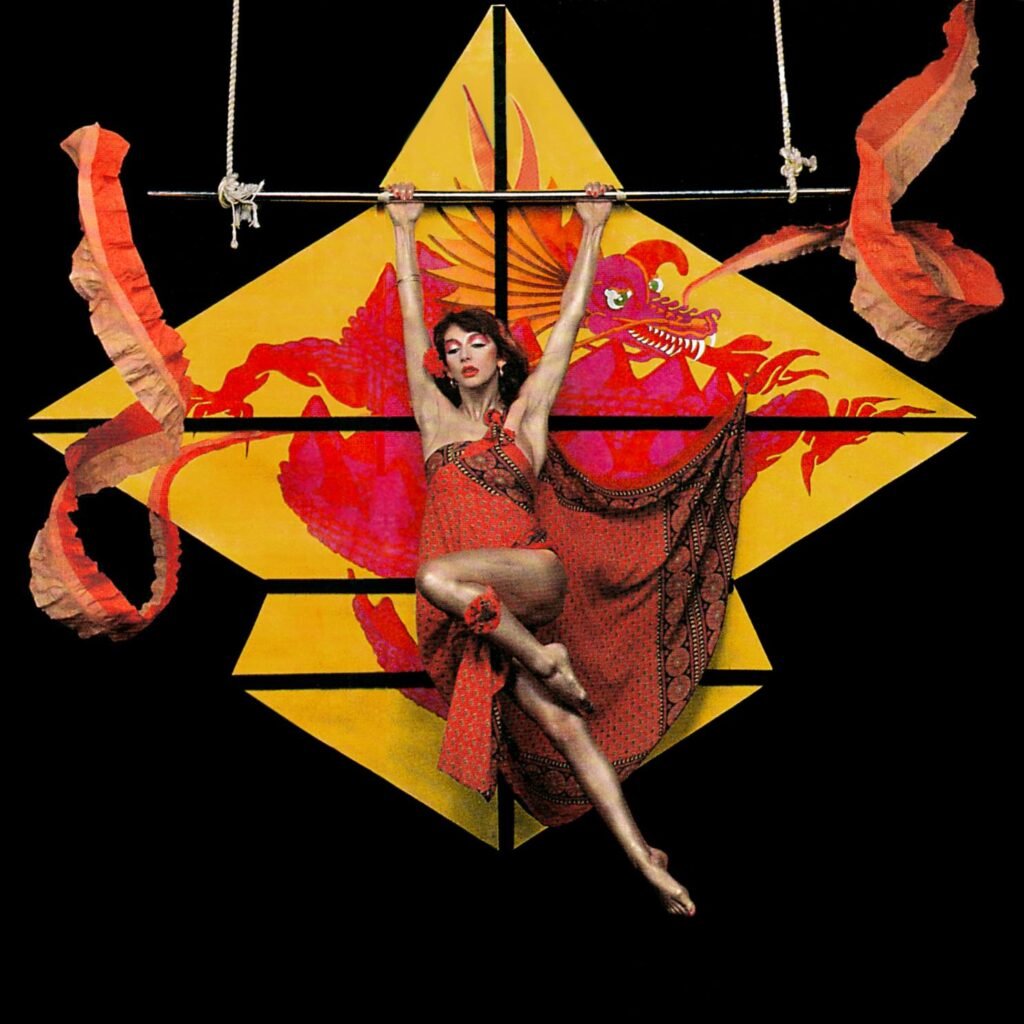
In the panorama of modern music, The Kick Inside stands as a beacon of artistic integrity, innovation, and emotional depth. Kate Bush’s debut album is a testament to her unique vision, blending intricate musical arrangements, poetic lyricism, and a thematic ambition that traverses the depths of human experience. Its strengths are manifold, from Bush’s ethereal and versatile vocal performances to the album’s pioneering production techniques and its fearless exploration of complex themes through the medium of pop music.
Strengths & Weaknesses
One of the album’s most remarkable strengths lies in its ability to remain timeless. More than four decades since its release, The Kick Inside continues to resonate with audiences old and new, a rare quality that underscores Bush’s genius in crafting songs that transcend the temporal boundaries of their creation. The emotional impact of the album is another of its strengths; Bush’s ability to convey profound emotional truths through her music invites listeners into a shared experience of introspection, joy, and discovery.
If one were to consider weaknesses, it could be argued that the sheer breadth of styles and themes might, for some, detract from a sense of musical coherence. Yet, even this is mitigated by the album’s underlying emotional and lyrical continuity, turning what could be perceived as a weakness into a testament to Bush’s versatility and her refusal to be confined by genre conventions.
The Kick Inside’s impact

The potential impact of The Kick Inside on listeners is vast. It serves not only as a source of musical enjoyment but also as an invitation to explore the deeper layers of emotional and intellectual engagement that music can provide. For artists and musicians, Bush’s debut is a masterclass in creativity and innovation, encouraging a fearless approach to artistic expression.
In the context of Kate Bush’s career, The Kick Inside is the foundation upon which her status as one of the most innovative and enduring artists in pop music was built. It set the stage for a career characterized by constant evolution and artistic bravery, marking Bush from the outset as an artist whose work would forever stand apart from the trends and expectations of the music industry.
Official Rating
Given the album’s immense strengths, its minor weaknesses, and its enduring impact on music and culture, The Kick Inside is awarded a rating of 9 out of 10. This rating reflects not only the album’s historical significance and artistic merit but also acknowledges the slight room for cohesion that comes with the ambitious scope of Bush’s debut. Ultimately, The Kick Inside is a landmark album, essential listening for those who seek to understand the power of music as a form of art and expression. It is a shining example of how creativity, when pursued with passion and integrity, can yield works that endure and inspire across generations.
